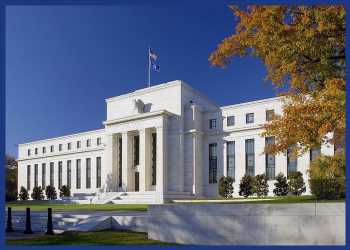
Fed Minutes Signal Further Interest Rate Hikes
The Federal Reserve released the minutes of its December monetary policy meeting on Wednesday, reinforcing expectations the central bank is likely to continuing raising interest rates.
The minutes reiterated that officials continue to anticipate that ongoing rate increases would be appropriate to achieve the Fed’s dual objectives of maximum employment and price stability.
The Fed noted that the pace of future rate hikes would take into account the cumulative tightening of monetary policy, the lags with which policy affects economic activity and inflation, and economic and financial developments.
At the meeting, the Fed decided to raise interest rates by 50 basis points, which marked a slowdown in the pace of rate hikes following four consecutive 75 basis point increases.
The central bank raised the target range for the federal funds rate to 4.25 to 4.50 percent, the highest level in 15 years.
The economic projections provided along with the announcement also suggested the Fed expects rates to ultimately be raised higher than forecast back in September.
The median forecast suggests rates will be raised to a so-called terminal rate of 5.1 percent in 2023 compared to the September projection of 4.6 percent.
The Fed minutes noted all participants raised their assessment of the appropriate path of interest rates, while none anticipated that it would be appropriate to begin reducing rates in 2023.
“Participants generally observed that a restrictive policy stance would need to be maintained until the incoming data provided confidence that inflation was on a sustained downward path to 2 percent, which was likely to take some time,” the Fed said.
The central bank added, “In view of the persistent and unacceptably high level of inflation, several participants commented that historical experience cautioned against prematurely loosening monetary policy.”
The minutes revealed participants also discussed a number of considerations related to the risks of monetary policy tightening.
One risk was that insufficiently restrictive policy could cause inflation to remain elevated longer than anticipated, while another risk was the lagged effect of policy tightening could end up being more restrictive than is necessary.
“Participants generally indicated that upside risks to the inflation outlook remained a key factor shaping the outlook for policy,” the Fed said, although, “a couple of participants noted that risks to the inflation outlook were becoming more balanced.”
“Participants generally observed that maintaining a restrictive policy stance for a sustained period until inflation is clearly on a path toward 2 percent is appropriate from a risk-management perspective,” the central bank concluded.
The Fed’s next monetary policy meeting is scheduled for January 31-February 1, with CME Group’s FedWatch Tool currently indicating a 69.2 percent chance of a 25 basis point rate hike and a 30.8 percent chance of a 50 basis point rate hike.
Source: Read Full Article